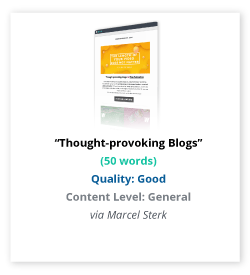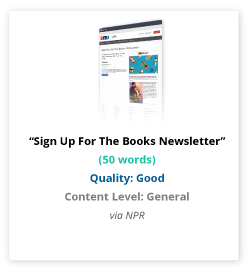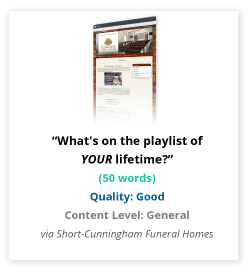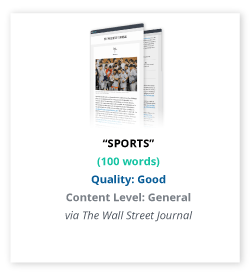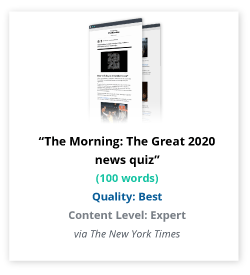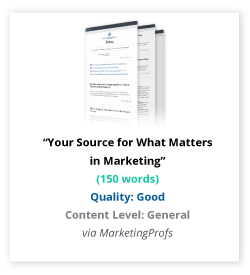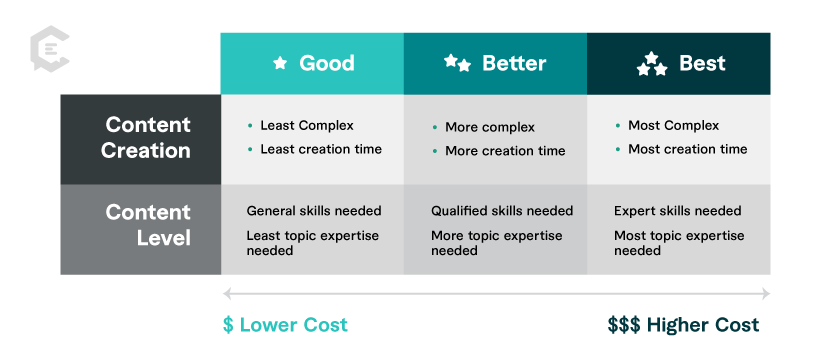We’re here to help you choose the most appropriate content types to fulfill your content strategy. In this series, we’re breaking down the most popular content types to their most basic fundamentals — simple definitions, clarity on formats, and plenty of examples — so you can start with a solid foundation.
What is email content?
Email content is any message sent to a subscriber, customer, or prospect’s inbox on a personal basis or by using a comprehensive email builder or automation platform.
Email content includes…
Everything from weekly to monthly newsletters to automated replies to promotions to new product announcements. Essentially any email sent to a customer or prospect through the customer lifecycle — that offers value to them — would fall under email marketing.
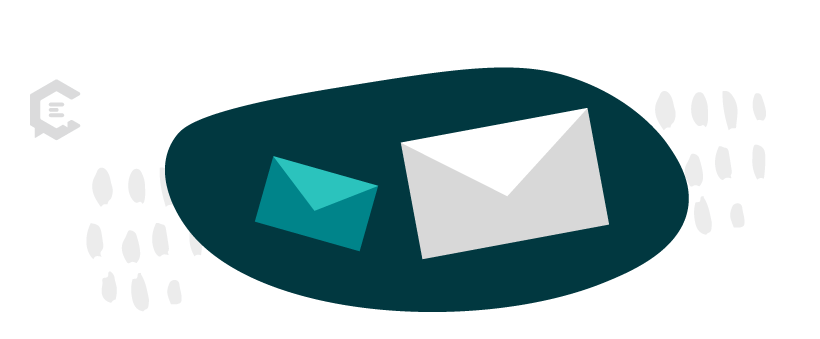
The long and short of it
Lengths will vary greatly depending on whether you’re sending an automated reply or a newsletter, and on the degree of design. However, here are some reference points when it comes to best practices:
A general guide to email copy length:
- Short Form (50 words)
- Standard (100 words)
- Long Form (150+ words)
What can email content do for a business?
It can serve as a brand builder and lead generator and drive traffic directly to a business’s other marketing channels, leading to short-term wins and long-term gains.
Here’s something to remember if you want to up the customer response rate from emails.
“For email content, remember that context is what makes something compelling,” reveals Jeff Rosenzweig, Senior Director of CRM at successful online dating site, Match. “The more relevant your content is, the better the response. Step into the mindset of your subscribers, where they are in their customer journey, and make sure to consider the broader cultural narrative.”
Businesses that benefit from email marketing…
Essentially, any company with a customer relationship to nurture and products to push can benefit from an effective email marketing program.
Popular email use-cases to consider…
Email marketing offers hope that, if executed correctly — from subject line to body copy to graphics — you can drive someone to take action (versus getting ignored, deleted, or sent to junk).
Here are a few ways email can be used:
- To drive leads and sales: By touting new products, offerings, or content, a company can convert customers directly from email using a creative design/marketing approach.
- To retain customers: By keeping a friendly conversation with your customer, you can build trust and confidence — to lower turnover and increase upsell/cross-sell potential.
- To promote values: By sharing your brand’s efforts to support your mission and vision, you can align your business/brand with the values that it stands for.
Email examples – short form
Email examples – standard form
Email examples – long form
Understanding content quality in examples
Our team has rated content type examples in three degrees of quality (Good, Better, Best) to help you better gauge resources needed for your content plan. In general, the degrees of content quality correspond to our three content levels (General, Qualified, Expert) based on the criteria below. Please consider there are multiple variables that could determine the cost, completion time, or content level for any content piece with a perceived degree of quality.
More content types with examples:
- What Is an Article?
- What Is an Ebook?
- What Is a White Paper?
- What Is a Customer Sory?
- What Is a Product Description?
- What Is an Infographic?
- What Is a Presentation?
- What Is a Motion Graphic?
- What Is an Animated Video?
Retain customers, get more sales, and boost brand awareness with high-quality email content from ClearVoice. Our experienced writers can craft email content for your next marketing campaign or newsletter. Talk to a content specialist to get started.

